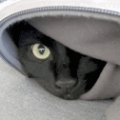The KiwiSDR 2 online store is open for orders! Please visit kiwisdr.nz
Please visit kiwisdr.com (documentation) and kiwisdr.nz (online store)
G8JNJ
About
- Username
- G8JNJ
- Joined
- Visits
- 3,719
- Last Active
- Roles
- Member
- Points
- 16
Reactions
-
Multiple "Sweepers" on my Cascade
It's Over The Horizon Radar (OTHR)
https://en.wikipedia.org/wiki/Over-the-horizon_radar
There are Six 'usual suspects'
These four tend to sit on specific frequencies for long periods of time.
Cyprus (Pluto)
China
Russia (Kontayner)
Iran (Ghadir)
What you are seeing is probably either Jindalee Operational Radar Network (JORN) from Australia or Superdarn
These move around to track propagation, but tends to operate on frequencies close to each other.
JORN also tends to change the sweep rate on a specific frequency, typically switching between three different rates in sequence.
https://en.wikipedia.org/wiki/Jindalee_Operational_Radar_Network
https://www.sigidwiki.com/wiki/Jindalee_Operational_Radar_Network_(JORN)
https://en.wikipedia.org/wiki/Super_Dual_Auroral_Radar_Network
https://www.sigidwiki.com/wiki/SuperDARN_(Super_Dual_Auroral_Radar_Network)
https://superdarn.ca/real-time
https://www.sigidwiki.com/wiki/PLUTO_II_OTH_Radar
http://www.chinatopix.com/articles/112419/20170314/radar-thaad-over-the-horizon-radar-oth-radar-intercontinental-ballistic-missile.htm
https://en.wikipedia.org/wiki/Container_radar
https://www.sigidwiki.com/wiki/29B6_'Kontayner'_OTH_Radar
https://www.sigidwiki.com/wiki/'Ghadir'_OTH_Radar
In addition there are many surface wave radars, but these tend to be a lot weaker and have a slower sweep rate.
http://www.codar.com/intro_hf_radar.shtml
https://cordc.ucsd.edu/projects/mapping/maps/
https://www.sigidwiki.com/wiki/CODAR
Regards,
Martin - G8JNJ -
Multiple "Sweepers" on my Cascade
It's Over The Horizon Radar (OTHR)
https://en.wikipedia.org/wiki/Over-the-horizon_radar
There are Six 'usual suspects'
These four tend to sit on specific frequencies for long periods of time.
Cyprus (Pluto)
China
Russia (Kontayner)
Iran (Ghadir)
What you are seeing is probably either Jindalee Operational Radar Network (JORN) from Australia or Superdarn
These move around to track propagation, but tends to operate on frequencies close to each other.
JORN also tends to change the sweep rate on a specific frequency, typically switching between three different rates in sequence.
https://en.wikipedia.org/wiki/Jindalee_Operational_Radar_Network
https://www.sigidwiki.com/wiki/Jindalee_Operational_Radar_Network_(JORN)
https://en.wikipedia.org/wiki/Super_Dual_Auroral_Radar_Network
https://www.sigidwiki.com/wiki/SuperDARN_(Super_Dual_Auroral_Radar_Network)
https://superdarn.ca/real-time
https://www.sigidwiki.com/wiki/PLUTO_II_OTH_Radar
http://www.chinatopix.com/articles/112419/20170314/radar-thaad-over-the-horizon-radar-oth-radar-intercontinental-ballistic-missile.htm
https://en.wikipedia.org/wiki/Container_radar
https://www.sigidwiki.com/wiki/29B6_'Kontayner'_OTH_Radar
https://www.sigidwiki.com/wiki/'Ghadir'_OTH_Radar
In addition there are many surface wave radars, but these tend to be a lot weaker and have a slower sweep rate.
http://www.codar.com/intro_hf_radar.shtml
https://cordc.ucsd.edu/projects/mapping/maps/
https://www.sigidwiki.com/wiki/CODAR
Regards,
Martin - G8JNJ -
Multiple "Sweepers" on my Cascade
It's Over The Horizon Radar (OTHR)
https://en.wikipedia.org/wiki/Over-the-horizon_radar
There are Six 'usual suspects'
These four tend to sit on specific frequencies for long periods of time.
Cyprus (Pluto)
China
Russia (Kontayner)
Iran (Ghadir)
What you are seeing is probably either Jindalee Operational Radar Network (JORN) from Australia or Superdarn
These move around to track propagation, but tends to operate on frequencies close to each other.
JORN also tends to change the sweep rate on a specific frequency, typically switching between three different rates in sequence.
https://en.wikipedia.org/wiki/Jindalee_Operational_Radar_Network
https://www.sigidwiki.com/wiki/Jindalee_Operational_Radar_Network_(JORN)
https://en.wikipedia.org/wiki/Super_Dual_Auroral_Radar_Network
https://www.sigidwiki.com/wiki/SuperDARN_(Super_Dual_Auroral_Radar_Network)
https://superdarn.ca/real-time
https://www.sigidwiki.com/wiki/PLUTO_II_OTH_Radar
http://www.chinatopix.com/articles/112419/20170314/radar-thaad-over-the-horizon-radar-oth-radar-intercontinental-ballistic-missile.htm
https://en.wikipedia.org/wiki/Container_radar
https://www.sigidwiki.com/wiki/29B6_'Kontayner'_OTH_Radar
https://www.sigidwiki.com/wiki/'Ghadir'_OTH_Radar
In addition there are many surface wave radars, but these tend to be a lot weaker and have a slower sweep rate.
http://www.codar.com/intro_hf_radar.shtml
https://cordc.ucsd.edu/projects/mapping/maps/
https://www.sigidwiki.com/wiki/CODAR
Regards,
Martin - G8JNJ -
FAX - CHA Canada 4414KHz
New FAX frequency for me last night that doesn't seem to be listed.
UPDATE
It's Sydney (VCO) Canada and it's in the FAX Extension list I just missed it.
Fax schedule:
1121 UTC 4416 kHz Ice analysis - Gulf of St Lawrence
1142 UTC 4416 kHz Ice Analysis East or SouthEast Newfoundlandwaters
1741 UTC 4416 kHz Ice analysis - Iceberg limit
2200 UTC 6915 kHz Ice analysis - Gulf of St. Lawrence
2331 UTC 6915 kHz Ice analysis East or SouthEast Newfoundlandwaters
Showing an ice chart for area around the Gulf of St Lawrence
Plus another odd one logged back in November, that I can't remember if I mentioned before.
GYA, 120Line Surface Prognosis chart 8083KHz USB FAX - TDoA possibly Inskip UK
Regards,
Martin - G8JNJ -
Open WEB RX enhancements
Some interesting enhancements to OpenWeb RX by Jakob, DD5JFK which he seems to have forked from the original work by Andr?s, HA7ILM.
https://github.com/jketterl/openwebrx/blob/develop/README.md
Apart from the addition of wsjt-x based demodulators for FT8, FT4, WSPR, JT65, JT9
He's also added Clientside bookmarks (DX Labels or Tags) which every user can store for themselves in the browser's localStorage.
Interesting stuff.
Regards,
Martin - G8JNJ






